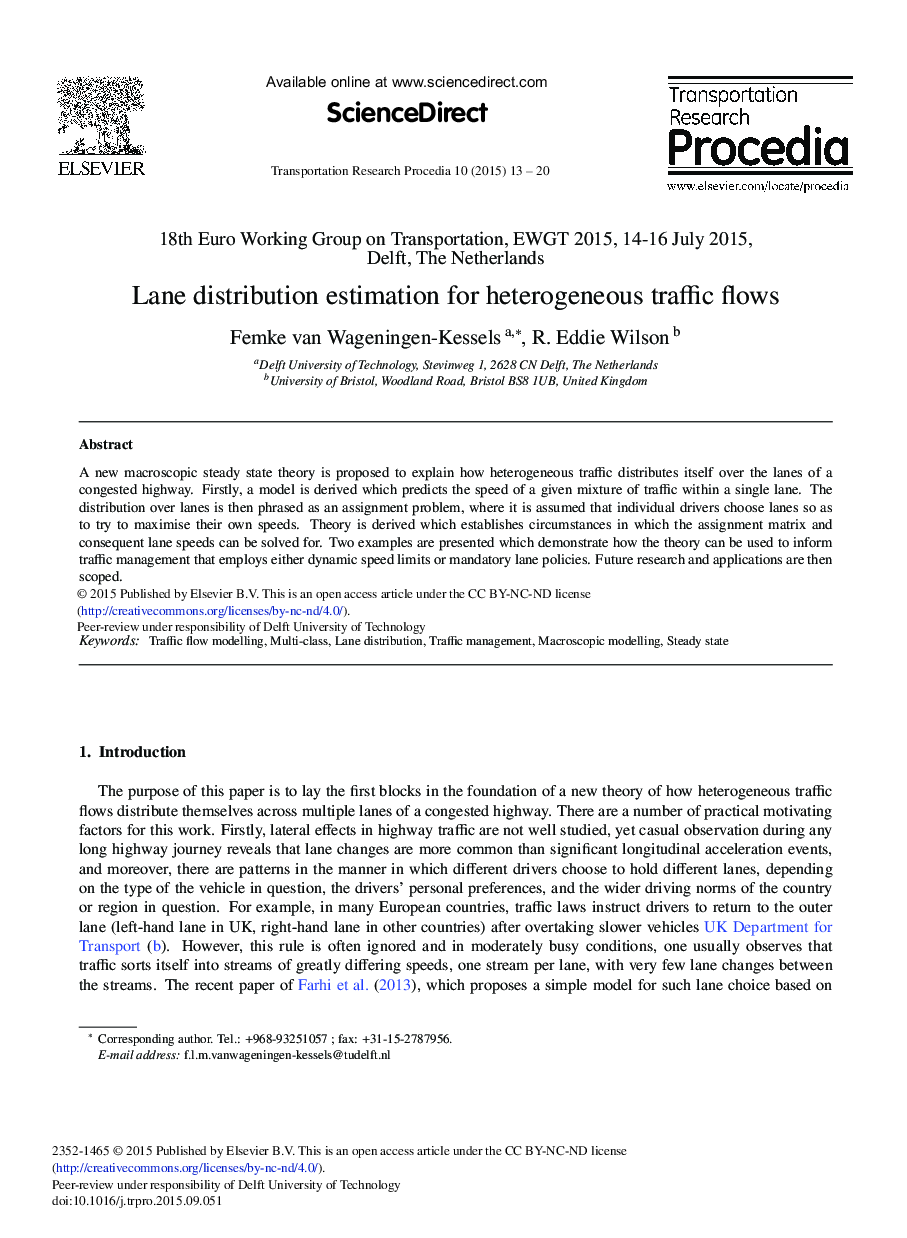| Article ID | Journal | Published Year | Pages | File Type |
|---|---|---|---|---|
| 1106811 | Transportation Research Procedia | 2015 | 8 Pages |
A new macroscopic steady state theory is proposed to explain how heterogeneous traffic distributes itself over the lanes of a congested highway. Firstly, a model is derived which predicts the speed of a given mixture of traffic within a single lane. The distribution over lanes is then phrased as an assignment problem, where it is assumed that individual drivers choose lanes so as to try to maximise their own speeds. Theory is derived which establishes circumstances in which the assignment matrix and consequent lane speeds can be solved for. Two examples are presented which demonstrate how the theory can be used to inform traffic management that employs either dynamic speed limits or mandatory lane policies. Future research and applications are then scoped.
